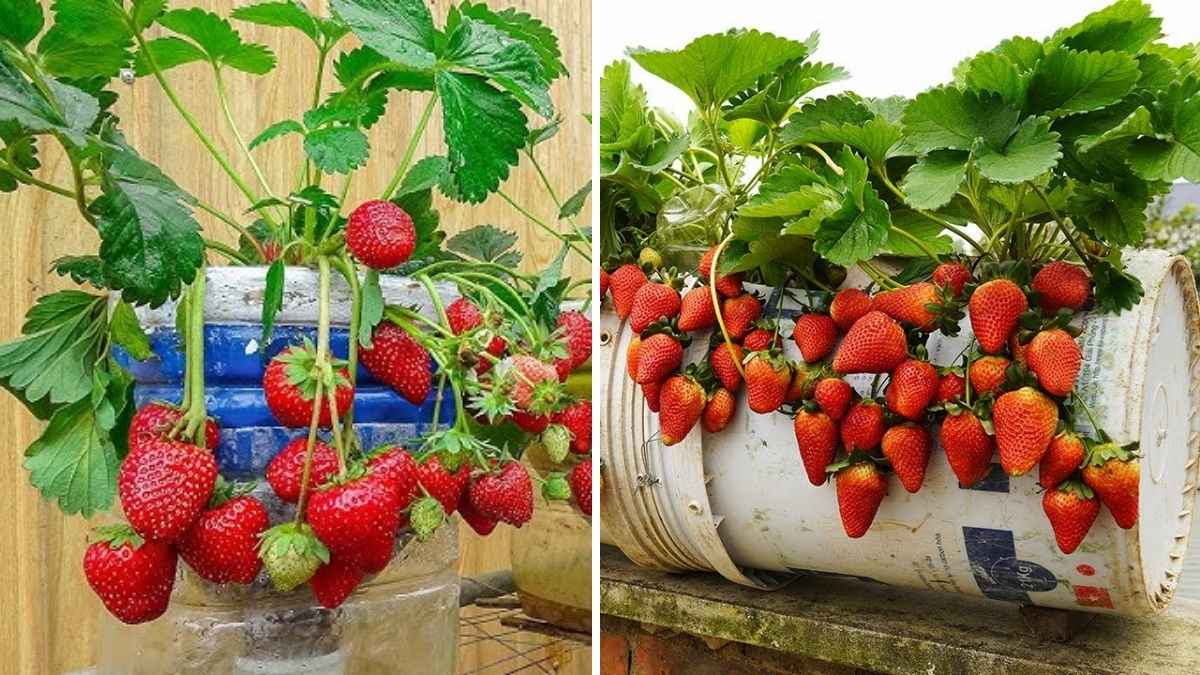Growing juicy strawberries at home is one of the most enjoyable gardening experiences you can have. The sight of bright red berries hanging from lush green plants is a delight for any garden lover. What makes it even more rewarding is that you can easily grow strawberries in recycled containers, making the process both eco-friendly and space-saving. Whether you live in an apartment, have a small balcony, or a backyard, strawberries can thrive beautifully in containers. This guide will help you learn how to grow sweet, juicy strawberries using recycled materials right at home.
Why Grow Strawberries in Recycled Containers
Growing strawberries in recycled containers offers several benefits. It’s an excellent way to reuse items that would otherwise be discarded, such as plastic bottles, buckets, tin cans, or old pots. This not only reduces waste but also saves money on gardening supplies. Containers are also ideal for controlling soil quality, sunlight, and moisture levels, which are essential for healthy strawberry plants. Additionally, container gardening reduces the risk of pests and diseases that often affect strawberries grown in the ground.
Choosing the Right Strawberry Variety
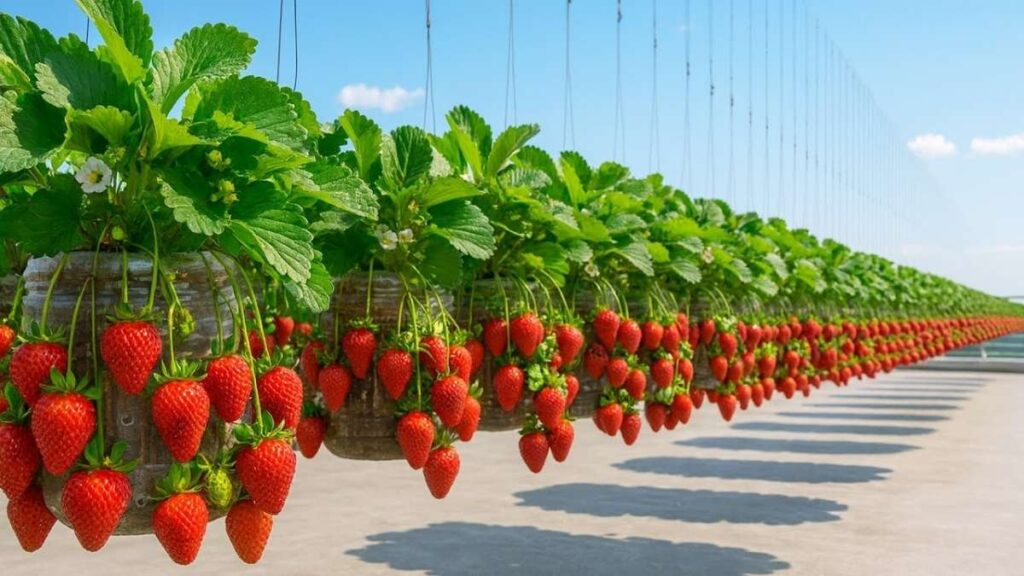
Before planting, it’s important to select the right type of strawberry for your growing conditions. Strawberries come in three main types:
- June-bearing: These produce a large, single harvest of strawberries once a year, usually in late spring or early summer. They are ideal if you want a big batch of berries at once.
- Everbearing: These produce two to three smaller harvests throughout the year, giving you a more consistent supply of strawberries.
- Day-neutral: These can produce fruit continuously throughout the growing season as long as the temperature stays between 35°F and 85°F.
For container gardening, everbearing and day-neutral varieties are often the best choices, as they provide steady fruit production and adapt well to limited space.
Selecting and Preparing Recycled Containers
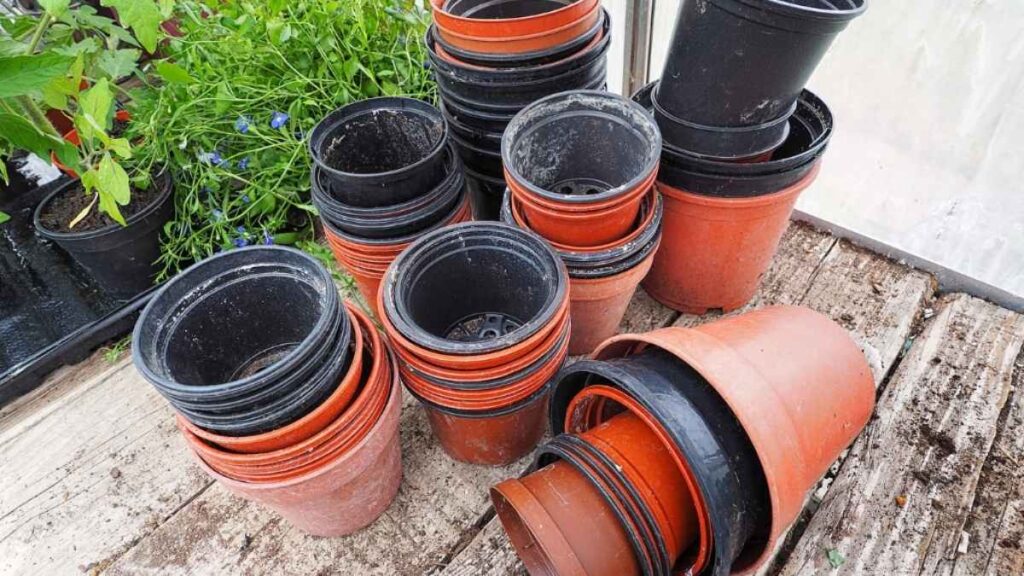
You can use almost any recycled container to grow strawberries, as long as it has proper drainage and enough space for the roots to spread. Here are a few creative ideas:
- Old plastic bottles cut in half
- Buckets, tubs, or paint cans
- Wooden crates or drawers
- Hanging baskets or vertical planters
- Old kitchen containers or large jars
Make sure the container has drainage holes at the bottom to prevent waterlogging, which can cause root rot. If there are no holes, you can drill or poke a few using a nail or screwdriver. Clean the container thoroughly before use to remove any chemicals or residues.
Preparing the Soil Mix
Strawberries prefer well-draining, nutrient-rich soil that retains moisture without becoming soggy. A good soil mix for container strawberries can be made by combining:
- Two parts potting soil
- One part compost or organic matter
- One part sand or perlite for drainage
This mixture ensures the plants get enough nutrients while maintaining proper aeration. You can also add a small amount of slow-release organic fertilizer to encourage steady growth. The soil pH should be slightly acidic, ideally between 5.5 and 6.5, which suits strawberries perfectly.
Planting the Strawberries
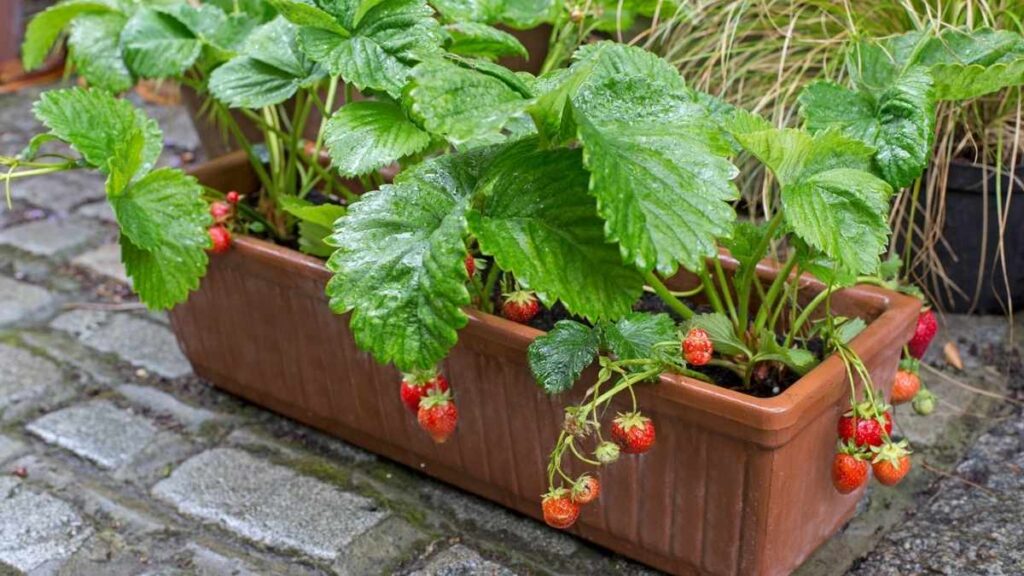
Once your containers and soil are ready, it’s time to plant the strawberries. If you’re using seedlings, choose healthy plants with green leaves and strong roots. Fill your recycled container with the prepared soil mix, leaving about an inch of space from the top.
Create small holes about 8 inches apart for each strawberry plant. Gently place each plant in the hole, spreading the roots out evenly, and cover them with soil so that the crown (the base of the plant where the leaves emerge) is just above the surface. Press the soil lightly around the plant to secure it in place.
After planting, water the strawberries thoroughly to help the roots settle. If you’re growing multiple plants in a single container, make sure there’s enough space between them for air circulation and growth.
Providing the Right Sunlight and Temperature
Strawberries love sunlight and need at least 6 to 8 hours of direct sunlight each day. Place your containers in a sunny spot, such as a balcony, windowsill, or patio. If you’re growing indoors, position them near a south-facing window or use grow lights to supplement natural light.
These plants thrive best in moderate temperatures between 60°F and 80°F. During extremely hot days, move the containers to a slightly shaded area to protect the plants from heat stress. In colder climates, you can bring the containers indoors or cover them with a protective layer to prevent frost damage.
Watering and Fertilizing
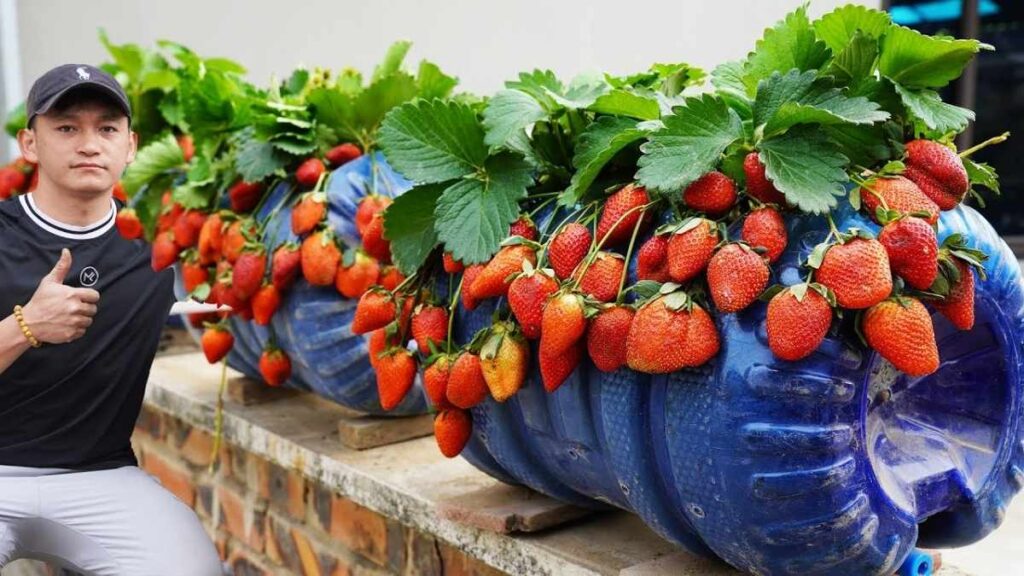
Proper watering is essential for growing juicy strawberries. The soil should remain consistently moist but never waterlogged. Water the plants regularly, especially during dry periods or hot weather. It’s best to water early in the morning, allowing excess moisture to evaporate during the day.
Since container soil can lose nutrients faster than ground soil, feeding your strawberry plants is important. Use a balanced liquid fertilizer or compost tea every two to three weeks during the growing season. Organic fertilizers with potassium and phosphorus encourage healthy fruit development. Avoid over-fertilizing with nitrogen, as it can lead to excessive leaf growth instead of fruit production.
Mulching for Healthier Plants
Mulching helps keep the soil moist, prevents weeds, and protects the strawberries from direct contact with wet soil, which can cause rot. You can use natural mulching materials such as straw, dried leaves, or coconut husk fibers. Spread a thin layer of mulch around the base of each plant, leaving space around the crown to prevent mold growth. Mulching also helps regulate soil temperature, keeping it cool during hot days and warm during cooler nights.
Pollination and Flowering
Strawberry plants produce small white flowers before fruiting. These flowers need to be pollinated to develop into berries. If you’re growing strawberries outdoors, bees and other insects usually handle pollination naturally. However, if you’re growing them indoors, you can hand-pollinate using a small brush or cotton swab. Gently transfer pollen from the center of one flower to another to encourage fruit formation.
Once pollinated, the flowers will slowly turn into green berries, which will ripen to a rich red color over the next few weeks.
Harvesting Juicy Strawberries
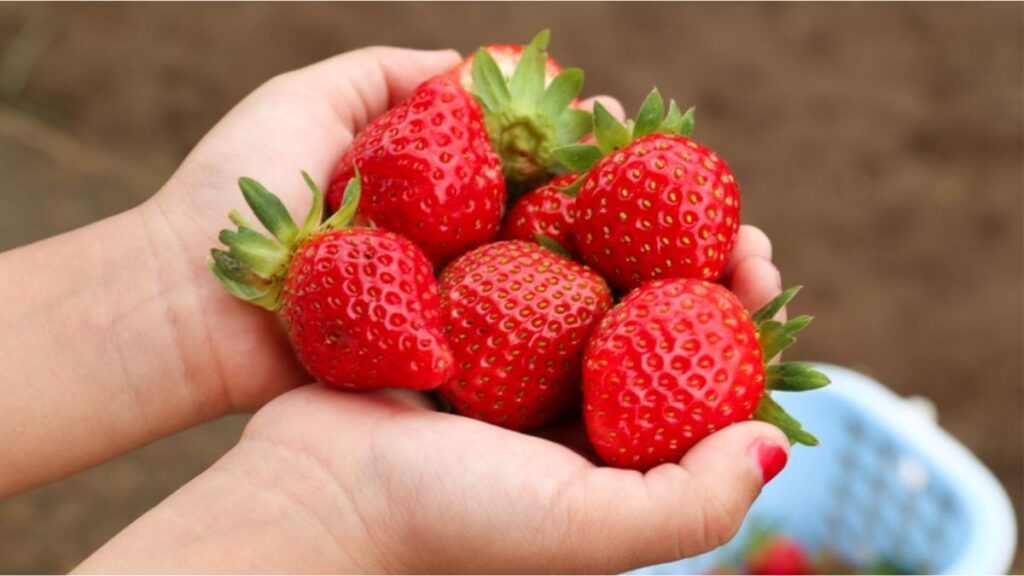
You’ll know your strawberries are ready to harvest when they turn completely red and have a shiny, plump appearance. The best time to pick them is in the morning when the berries are cool and firm. Gently twist the fruit off the stem rather than pulling it to avoid damaging the plant. Regular harvesting encourages the plant to produce more fruit.
Freshly picked strawberries are best enjoyed immediately, but you can also refrigerate them for up to three days. For longer storage, freeze or turn them into jam, smoothies, or desserts.
Common Problems and Solutions
While strawberries are relatively easy to grow, they can sometimes face a few issues.
- Wilting leaves: This may be due to underwatering or poor drainage. Check the soil and adjust your watering routine.
- Small or misshapen fruits: Usually caused by lack of pollination or insufficient sunlight. Hand-pollinate and ensure they get enough light.
- Pests: Watch out for aphids or snails. Use neem oil spray or organic insect repellents to protect the plants.
Conclusion
Growing juicy strawberries in recycled containers is not just simple but also incredibly rewarding. With the right mix of sunlight, soil, and care, you can enjoy homegrown, organic strawberries all year round. This method saves space, reduces waste, and adds a touch of green to your home. Whether you’re a beginner or an experienced gardener, turning recycled containers into strawberry planters is a creative and sustainable way to grow your own delicious fruit. In just a few months, you’ll be picking fresh, sweet strawberries straight from your own home garden.

